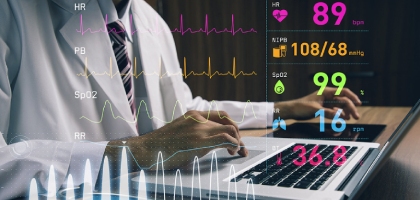
Insights
The Importance of Data Aggregation in Healthcare
The Importance of Data Aggregation in Healthcare
Data aggregation is the process of combining information from multiple systems to produce interconnective, shareable information.
The healthcare industry demands actionable data and providers need to be able to share it. However, sharing of sensitive healthcare data is one of the biggest challenges in the sector. At this point, aggregation management facilitates the work of healthcare providers. So what is data aggregation? Data aggregation is the process of combining information from multiple systems to produce interconnective, shareable information.
Sharing health data has very important benefits. These benefits are not just limited to hospitals or companies. Information sharing provides significant benefits to every stakeholder of healthcare services.
Aggregate vs Individual Data
In the healthcare sector, individual data is created by one patient’s interaction with the healthcare system. Individual data includes patient’s name, medical history, lab results, family medical history, diagnosis, age, and etc. This type of data is necessary for treatment on the individual level. With these data physicians can make more accurate and effective decisions about patient’s future treatment.
When you imagine this principle on a larger scale, what if doctors had access to not only their patient’s data, but data from thousands of similar cases? Anonymized aggregate data can help physicians see patient data from a different angle, with a plethora of supplemental information. That is the power of aggregate management. Actually, aggregate management can be lifesaving when utilized properly by healthcare providers.
As a summary, aggregate management is crucial to treat patients and it can offer important insight for strategic planning and creating health systems.
What Are the Benefits of Data Collaboration in Health?
Aggregation management’s benefits are clear, yet it is more than “more data equals better healthcare”. Here are a few practical ways data sharing can positively influence healthcare:
Aggregation data builds and maintains confidence in data quality, reliability, and balance. A survey that polls 10 people is fine, but one that asks one thousand people the same question is demonstrably better. By simply increasing the sample size, data sharing increases data quality.
It facilitates better healthcare solutions. More knowledge provides better product development. Not only is the data more reliable, but also it can help product developers and create healthcare solutions that suit the needs of a larger population. In addition, supply and demand statistics ensure that enough of a given product or medication are on the market.
It allows superior monitoring of healthcare trends. Remember the individual vs. aggregate patient story above? Now imagine a scenario where doctors can identify potential diagnoses based on healthcare trends, past treatment for similar conditions, and more. By monitoring trends in healthcare, providers can more effectively monitor patients too.
It maintains transparency and trust. Transparency is the key to building trust, and data transparency between providers, product creators, pharmaceutical professionals, and patients is paramount to building lasting trust between the healthcare system and its consumers.
Turning Healthcare Data Into Insight
With the rise of Electronic Health Records (EHR), healthcare data is being tracked more than ever. However, how can doctors turn it that data into actionable insight? Is it being used to improve a system designed to treat patients, or is it simply another way for big hospitals and pharmaceutical companies to outsmart the competition? This is where data transparency takes place. The more stakeholders in the healthcare sector share data, the less focused on the competition they become. On the flipside, this allows them to become more focused on data-driven decisions for the benefit of patients.
One of the most important benefits of it is measuring value. Data can help companies understand trends within the industry. More importantly, data sharing highlights top-performing organizations in the healthcare system and allows them to adapt their own processes to those of higher-performing institutions.
Data in the healthcare industry includes clinical data, information about hospitals, patient data, financial information, HR data, supply chain statistics, and etc. With so much data floating around, it is important to understand a few tried and true methods for using it effectively:
Focus on acquiring new data feeds quickly. When dealing with large quantities of data it is best to focus on getting it in one place. This is effective because it focuses on gathering all of the necessary sources before cleaning it up.
Make sure context matches the definitions. Multiple sources for data may lead to misleading contextual information. Let’s say you’re gathering information about a specific type of surgery. One source (from the surgeons) defines the length of stay one way, while data from administrative offices defines it another way. Be wary of these differences and account for them when you scrub data.
Remember that your data architecture is temporary and flexible. Sure, the word “architecture” typically refers to something immovable. In reality, your data architecture is always subject to improvement. With a late-binding data structure, analysts have the freedom to adjust the structure before the data itself is finalized. Simply put, a flexible structure lets you mix sources by different means, allowing for greater flexibility and better outcomes.
At times, creating an effective data architecture for healthcare may seem challenging. After all, there is a lot of information to collect, scrub, organize, display, and apply. The right data management suite will allow you to combine multiple data sources flawlessly and import them into an interactive, secure dashboard that can communicate those data insights to stakeholders.
In addition, you can get detailed information about disease management by reading our article titled What is Disease Management and What Are Its Benefits to Patients? See you on different topics.
Source: https://bit.ly/2QO7SsV









